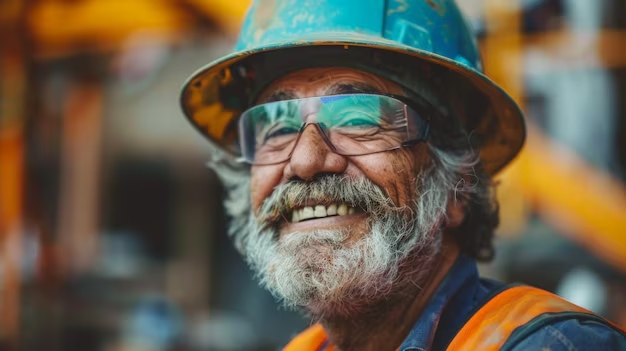
In industries where hazardous environments are part of daily operations, eye protection is a critical safety measure. Whether it’s flying debris, harmful chemicals, or intense light, workers’ eyes are often at risk. To mitigate these dangers, implementing a comprehensive industrial eyes safety eyewear program is essential. Not only does this improve employee well-being, but it also ensures compliance with safety regulations. In this article, we’ll take a deep dive into how such programs work, the types of eyewear involved, and the associated costs.
What Is an Industrial Eyes Safety Eyewear Program?
An industrial eyes safety eyewear program is a structured initiative aimed at ensuring that workers in hazardous environments are provided with the appropriate protective eyewear. The goal is to reduce eye injuries while maintaining operational efficiency. Companies that embrace these programs often see a reduction in workplace accidents and better compliance with safety standards.
Key Components of an Industrial Safety Program
A robust industrial safety program involves a holistic approach to worker protection. It typically includes training, protective gear, hazard identification, and continuous monitoring. The safety eyewear component specifically addresses eye hazards and ensures that workers are equipped with glasses or goggles that meet industry standards.
Why an Industrial Safety Eyewear Program Matters
Workplace safety programs aren’t just a regulatory requirement—they’re also good business. Eye injuries account for a significant portion of lost workdays and compensation claims. An eyewear program can prevent costly downtime, safeguard employee health, and enhance productivity.
Types of Industrial Eye Protection
- Safety Glasses: Standard protective glasses designed to shield against flying particles and minor impacts.
- Safety Goggles: Goggles offer a higher level of protection, sealing around the eyes to keep out chemicals, dust, and more.
- Face Shields: Often used in conjunction with safety glasses or goggles, face shields provide additional protection from splashes or intense light.
Industrial Prescription Safety Eyewear Program
For workers who require vision correction, prescription safety eyewear is a vital component of the program. Offering prescription safety glasses ensures that employees with visual impairments are not forced to choose between seeing clearly and protecting their eyes.
Customizing Safety Eyewear for Specific Industries
Different industries pose different risks, so it’s essential to tailor eyewear solutions to specific hazards. For example, in manufacturing, workers need protection against flying debris, while in chemical processing, goggles that seal tightly around the eyes are critical.
Key Standards for Industrial Safety Eyewear
The American National Standards Institute (ANSI) sets guidelines for industrial safety eyewear. ANSI Z87.1 is a common standard that outlines performance criteria such as impact resistance, optical clarity, and protection against chemical splashes.
Training and Compliance in Industrial Eye Safety Programs
Employee training is crucial for the success of any safety program. Workers must understand the risks they face and how to use their protective gear properly. Regular compliance checks ensure that the eyewear is used correctly and consistently.
Cost of Implementing an Industrial Eyes Safety Eyewear Program
The cost of implementing such a program depends on the size of the workforce, the type of eyewear required, and the frequency of replacements. However, the investment in safety equipment is often offset by savings from reduced injury-related expenses.
Challenges in Maintaining a Successful Program
Maintaining an industrial safety eyewear program requires ongoing effort. Workers may resist wearing eyewear, especially if it’s uncomfortable. Regularly updating the equipment to ensure it meets safety standards and addressing employee concerns about fit and functionality are crucial to long-term success.
How to Implement an Industrial Eye Safety Program in Your Company
- Assess Risks: Start by identifying the specific eye hazards in your workplace.
- Choose the Right Eyewear: Select protective glasses or goggles that meet the needs of your workforce.
- Train Employees: Ensure all workers know when and how to use their eyewear.
- Monitor and Update: Regularly review the program to ensure compliance and update equipment as necessary.
Conclusion
An effective industrial eyes safety eyewear program is not just a regulatory requirement—it’s a key component of workplace safety that can save lives, reduce costs, and improve employee satisfaction. By investing in the right protective equipment, providing training, and ensuring compliance, businesses can create a safer and more productive working environment.
FAQs
How can I ensure my industrial safety eyewear program is compliant?
Compliance starts with adhering to ANSI standards, providing the right equipment, and conducting regular training sessions for workers.
What are the common types of industrial eye protection?
Common types include safety glasses, safety goggles, and face shields, each offering different levels of protection.
Is it expensive to run an industrial safety eyewear program?
The cost depends on the size of your workforce and the types of eyewear required, but the benefits far outweigh the expenses due to fewer injuries and lower compensation costs.
Can I get prescription safety glasses for my workers?
Yes, prescription safety glasses are available and should be offered to employees who require vision correction for optimal safety and performance.
How often should industrial safety eyewear be replaced?
Regular inspections are necessary, and eyewear should be replaced if it shows signs of damage, wear, or no longer meets safety standards.
What should I do if my employees are reluctant to wear safety glasses?
Make sure the eyewear is comfortable and fits properly. Involve workers in choosing equipment and provide regular training on the importance of eye protection.



